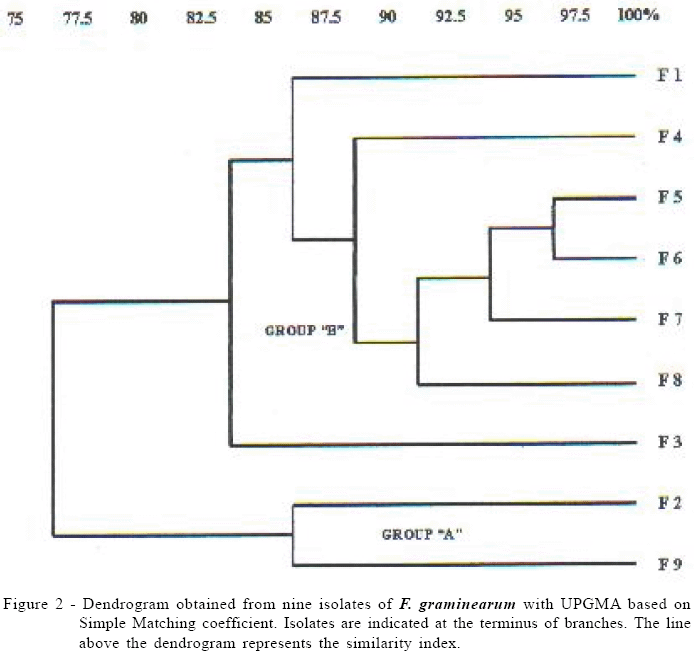Fusarium graminearum isolates causing Fusarium head blight in wheat were collected in Brazil and analyzed by random amplified polymorphic DNA (RAPD) markers and vegetative compatibility grouping (VCG). Nitrate non-utilizing mutants (nit) from each isolate were paired to verify heterokaryon formation. Three VCGs were identified among F. graminearum isolates: VCG1 included F-2, F-3 and F-4 isolates; VCG2 included F-1, F-6 and F-9 isolates; VCG3 included F-5, F-7 and F-8 isolates. Based on PCR amplification with eight different primers, the isolates showed great genetic similarity among themselves. Dendrogram analysis demonstrated two RAPD groups: Group A, consisting of isolates F-2 and F-9, and Group B, composed of the remaining isolates. Results suggest the clonal origin of F. graminearum isolates.
Fusarium graminearum; genetic variability; RAPD; vegetative compatibility groups



